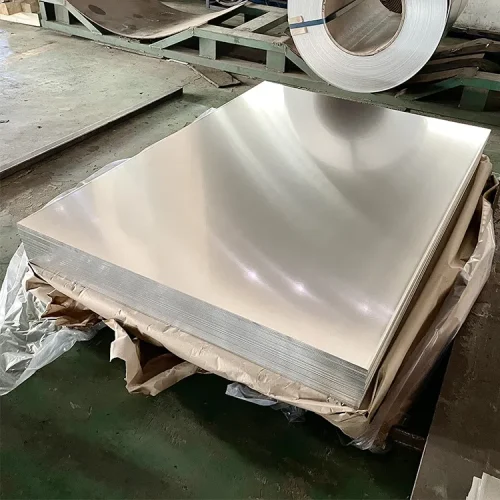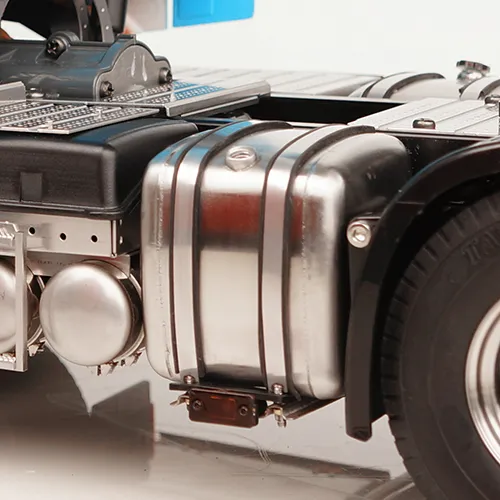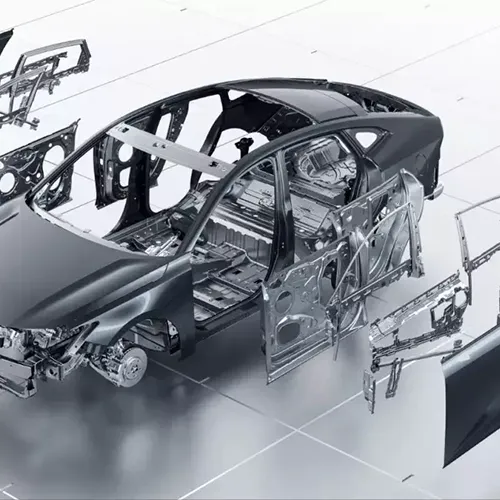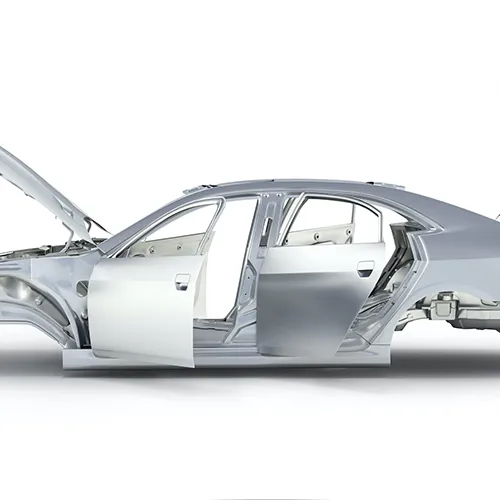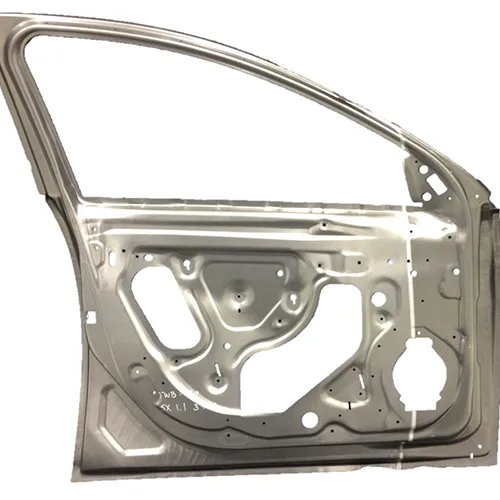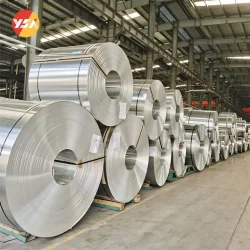What Are the Automotive Grade Aluminum Alloys?
Aluminum alloys for automobiles mainly include four categories: casting, rolling, extrusion and forging. Among them, cast aluminum alloys are mainly used for automobile engine blocks, cylinder heads, clutch housings, bumpers, wheels, engine brackets and other parts; Rolled aluminum sheets and foils are mainly used for body panels, door skins, cooling systems, battery shells, battery foils, etc.; extruded profiles are mainly used for anti-collision beams, suspension parts, various brackets, battery trays, etc.; forged parts are mainly used for For wheels, bumpers, crankshafts, etc. This article will focus on introducing you to the leading applications of rolled aluminum sheets in the automotive industry:
History Of Automotive Aluminum Sheets :
Aluminum was first discovered in the early 1800s, mass-produced in 1824, and by the turn of the century was reliably cast, rolled, and formed, and was quickly put into use by automobile manufacturers. It appeared on cars as early as the 1908 Bugatti, and its construction consisted of extensive aluminum sand castings and formed aluminum body panels that were butt welded using an oxy-fuel welding gun and hand-ground to a polished state.
The Pierce Arrow body was minted for several years, from 1912 until 1917 or 1918. These cast bodies are actually huge sand castings, and in some cases they exhibit very large oxy-fuel welds.
1934 Alfa Romeo 8C2300 with aluminum Touring Carrozzeria body. This Alfa is equipped with an aluminum supercharged inline six-cylinder engine. With twin overhead cams, it was a Grand Prix car that was rebuilt after the season.
After World War II, Ferrari, Aston, Porsche and Cobra produced some of the most legendary aluminum-bodied cars for racing in the 1950s and 1960s, before cars evolved to fiberglass and bonded structure.
Cast aluminum bumpers on the BMW 501, 502 and 503 models from the early 1950s and cast aluminum door frames on the Mercedes 3OOSL Roadster.
Advantages of Aluminum Alloys in Automobile Lightweighting
Save Fuel, Reduce Emissions, Safety, Improve Performance
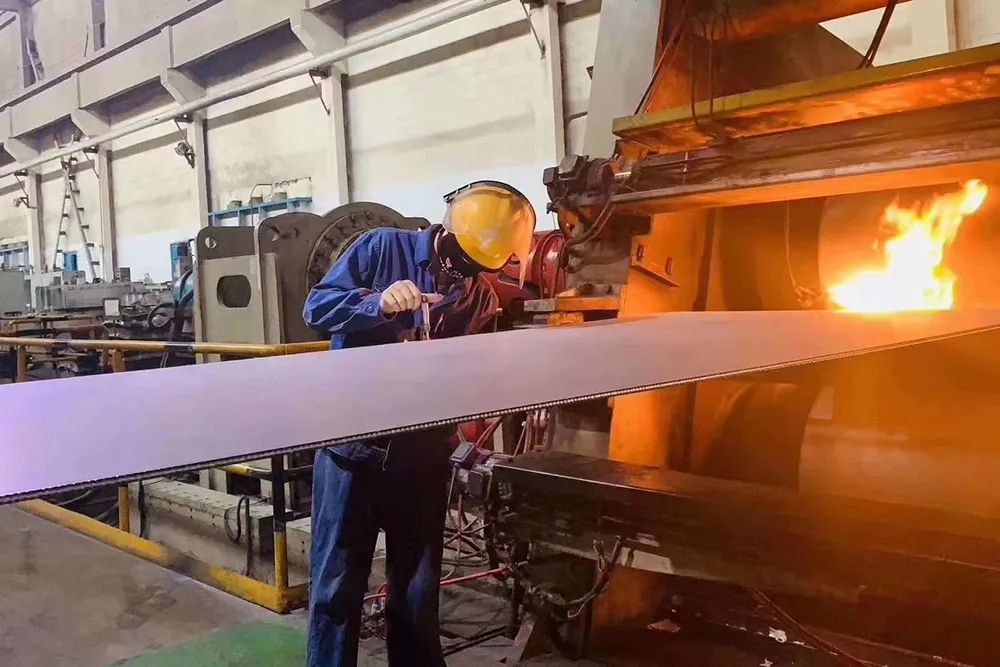
01
Good energy saving and weight reduction effect.
The density of aluminum is only 1/3 of steel, it has good thermal conductivity, and its processing performance is 4.5 times higher than that of iron. Aluminum alloy can reduce the weight of the vehicle by 10% and increase fuel efficiency by 6%-8%;

02
Corrosion resistant.
The oxide film formed on the aluminum surface has good corrosion resistance. “All-aluminum body” has better durability than steel body.
03
Improve comfort and safety.
Aluminum alloy cars reduce the weight of the car while ensuring capacity. The center of gravity of the car body is lowered, making the car more stable and comfortable to drive. Aluminum can absorb a large amount of impact force in the event of a collision and can protect humans very well.

04
High recycling value.
The loss of aluminum is only about 5%, and its regeneration performance is higher than other metal. The recycling value is higher.
What Are the Advantages of Aluminum Compared to Other Materials?
1. Compared with high-strength steel, aluminum alloy has high strength, can minimize the weight of the car body, has good weight reduction effect, has strong corrosion resistance, has low recycling difficulty, high recycling rate, has the advantages of green and environmental protection, and can realize automobile Recycling and reuse of aluminum resources in the industrial chain;
2. Compared with magnesium (Mg) alloys, aluminum alloys are stronger and easier to process. Currently, magnesium alloys are mainly Mg-Al alloys, and the price of aluminum alloys directly used in automobiles is lower;
3. Compared with titanium (Ti) alloys, since aluminum alloys have relatively low sensitivity requirements for processing process parameters, the application of aluminum alloys has more cost advantages;
4. Compared with composite materials such as plastics and carbon fibers, due to the current low level of actual R&D and application of composite materials and the inability to achieve mass production, aluminum alloys have greater prospects for large-scale application.
Therefore, aluminum alloy has become the preferred lightweight material for new energy vehicles. It can not only ensure the quality, safety and economy of the vehicle, but also reduce the weight of the vehicle and increase the vehicle’s cruising range.
Performance Parameters:
Aluminum | Yield Strength (N/mm2) | Tension Strength (N/mm2) | Elongation (%) | Average Elongation (%) | Hardness (HV) |
1100-O | 31 | 95 | 38 | 30 | 24 |
1100-H24 | 139 | 142 | 13 | 45 | |
3003-O | 40 | 107 | 33 | 29 | 30 |
3003-H14 | 157 | 169 | 5 | 49 | |
3004-O | 62 | 177 | 25 | 22 | 48 |
3004-H24 | 175 | 215 | 9 | 8 | 76 |
5052-O | 107 | 213 | 24 | 22 | 52 |
5052-H24 | 212 | 269 | 13 | 10 | 80 |
5182-O | 125 | 264 | 31 | 28 | 26 |
5182-H24 | 273 | 350 | 11 | 10 | 91 |
6061-O | 45 | 125 | 30 | 25 | |
6061-T4 | 197 | 271 | 24 | 20 | 64 |
Performance Requirements For Automotive Aluminum :
The performance requirements for aluminum alloy sheets for automobiles are: in addition to mechanical properties and corrosion resistance that meet standards and specifications, they should also have the following properties:
- Good formability, low yield-to-strength ratio and high forming limit.
- The surface is smooth.
- Good welding performance. In order to meet the process performance requirements of welding processing of automobile parts, aluminum alloy plates need to have good welding performance.
- Good bake hardening properties.
- High dent resistance.
- Excellent surface treatment and coating properties.
- Certain anti-aging stability properties.
Automotive Aluminum Alloy Quality Control Testing:
In terms of quality control, a series of testing and control measures are required during the production and use of aluminum alloy plates to ensure that they meet design and performance requirements. These measures include:
Chemical composition testing: The chemical composition of aluminum alloy plates is an important factor affecting its performance and requires strict testing and control.
Mechanical property testing: The tensile strength, yield strength, elongation and other mechanical properties of aluminum alloy plates need to be tested and controlled.
Surface quality inspection: The surface quality of aluminum alloy plates will also affect its performance, and it is necessary to conduct appearance inspection and surface treatment effect testing.
Metallographic structure detection: The metallographic structure of aluminum alloy plates is an important indicator reflecting its internal structure and needs to be detected and controlled.
Non-destructive testing: Non-destructive testing of aluminum alloy plates is carried out using methods such as radiation, ultrasonic waves and magnetic particles to detect whether there are internal defects or damage.
What Aluminum Alloy is Used for Automotive ?
Aluminum alloys have many applications in car bodies. Compared with steel, aluminum alloy has the characteristics of light weight, good corrosion resistance, and easy processing. It has many application fields on the car body. It has been used in automobile engines, motors, chassis systems, wheels, transmission systems, and heating systems. Management systems, body structural parts and other parts. The processing technology of aluminum alloy can be mainly divided into aluminum die-casting, aluminum extrusion, aluminum rolling and aluminum forging. Aluminum alloy products produced according to different processes can be used for parts in different parts of the car body. Commonly used automotive aluminum plates are 5000 series aluminum sheets and 6000 series aluminum sheets, the details are as follows:
Series | Alloy | Typical Applications | Picture Show |
1000 | 1100 | Mainly used for thermal insulation. | |
3000 | 3003 | 3003 aluminum commonly used in automotive piping, paneling, and power castings for hybrid and electric vehicles. | 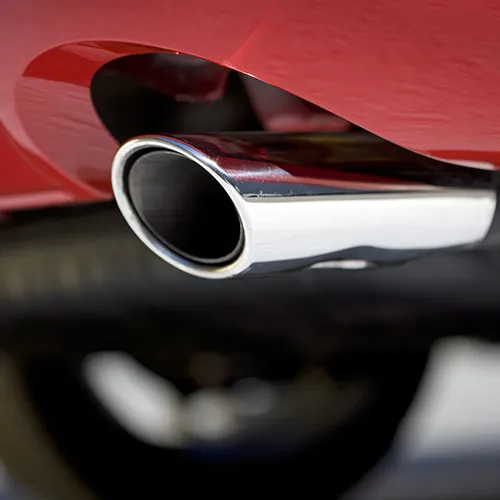 |
3004 | 3004 aluminum sheet can be used on cowl grilles and radiators. | ||
3105 | 3105 aluminum sheet is widely used in automobile body panels as fenders, doors and floor paneling. | 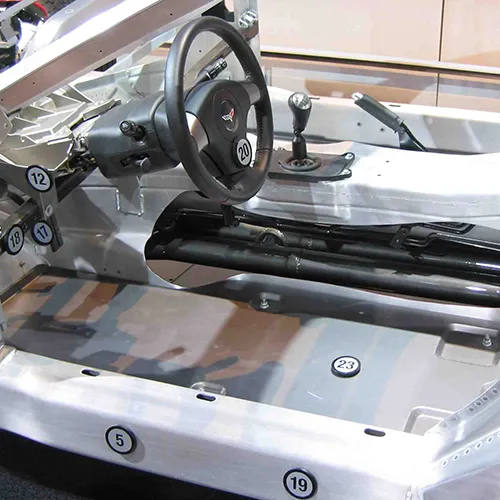 | |
5000 | 5005 | 5005 aluminum alloy is used in body panels, fuel tanks, steering panels and pipes. | |
5052 aluminum alloy is widely used in fuel tanks, truck trailers, suspension panels, display panels, brackets, brake discs and drums, and many other non-critical automotive parts. | |||
5083 is ideal for complex automotive components such as engine mounts and body panels. | |||
5182 aluminum is often used in the structural pillars of car bodies. Examples include structural supports, doors, hoods and front wing end panels. | |||
6000 | 6061 aluminum sheets are commonly used in cross members, brakes, wheel drive shafts, truck and bus bodies, air bags and receiver cans. | ||
6082 | 6082 aluminum sheet exhibits excellent impact resistance and is widely used in load-bearing frames. | ||
6016 | 6016 aluminum is dent-resistant and is commonly used in body panels, doors, trunks, roofs, fenders and exterior panels. | 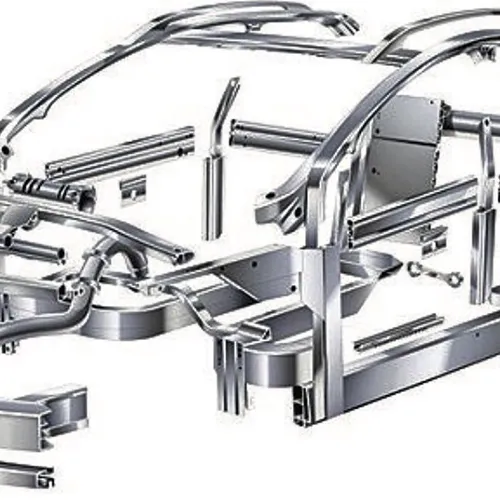 |
Aluminum Alloy for Automotive Body 5000 Series Vs 6000 Series :
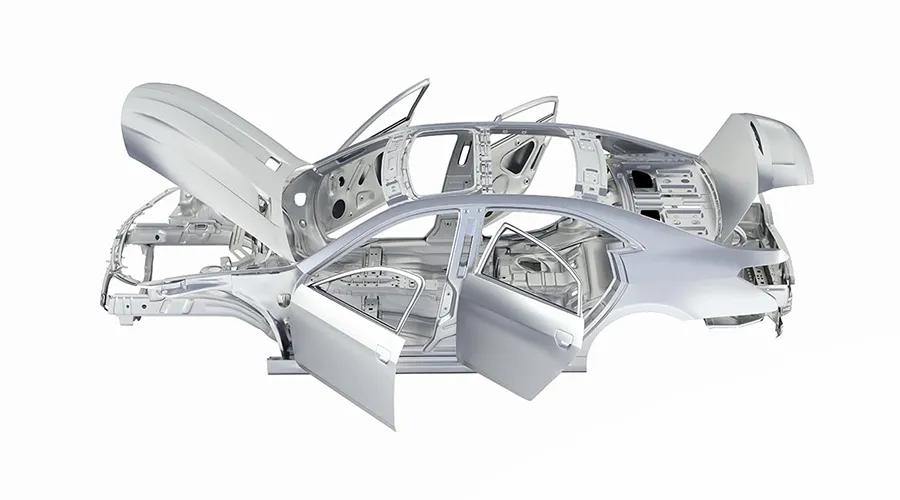
Automobile body aluminum alloy sheets are mainly made of 6 series aluminum alloy materials, such as 6014, 6016, etc. 6000 series aluminum alloy has excellent formability, edge wrapping performance, paintability, baking resistance, and is not easy to form irreversible ripples on the surface of the car body. Therefore, it is widely used in exterior car body coverings, such as Weilai, Tesla’s all-aluminum body.
The 5 series aluminum alloy has excellent formability and is easy to form complex parts. It is the preferred material for structural parts and inner covering parts of new energy vehicles, such as the 5000 series aluminum alloy rear door inner panel of the Land Rover Discovery 4, and the 5xxx of the Mercedes-Benz S-Class. It is an aluminum alloy door inner panel and the hood outer panel of Great Wall VV7. However, 5xxx series aluminum materials are prone to graining during the forming process, so they need to be controlled during the forming process.

6000 series aluminum is an alloy that can be strengthened by heat treatment. It has strong formability and corrosion resistance, high strength and good high temperature resistance. What needs to be considered for aluminum alloy automobile body panel materials is that the strength will be improved after being painted after stamping and forming, and it has the ability to be hardened by paint. In addition, the yield strength and tensile strength of the 6000 series alloy aluminum T4 plate are similar to those of the steel plate, and the n value exceeds that of the steel plate.
5xxx series aluminum alloys are aluminum alloys that cannot be strengthened by heat treatment. It has the characteristics of medium strength, good corrosion resistance, good processing performance, and good welding performance. The alloy has the advantages of ordinary carbon steel plates in terms of strength, formability and corrosion resistance. It can be used for processing complex shapes such as automobile inner panels. However, after the aluminum-magnesium alloy sheet is left at room temperature, wrinkles are likely to appear on the surface after stamping, which affects the appearance quality; the ductility and bending ability will also become worse due to the increase in Fe content, and softening will easily occur during baking. Disadvantages of aluminum-magnesium alloys used as automotive body panels: delayed yielding and Ryder lines. When the grain size is >100μm, the plate is prone to the “orange peel effect”.
Automobile Aluminum Sheet Market :
Automotive aluminum sheets have the highest technical barriers among aluminum rolled products and are expensive. Automotive aluminum sheets have long been popular in high-end foreign car models. In a period when environmental protection requirements were relaxed and new energy vehicles had not yet emerged, the application scope of automotive aluminum sheets was limited. Since 2017, as environmental protection requirements have increased and the penetration rate of new energy vehicles has increased, vehicle lightweighting has become a development trend. Since the beginning of this year, the new energy vehicle industry has exploded, and the demand for automotive aluminum sheets has grown rapidly.

